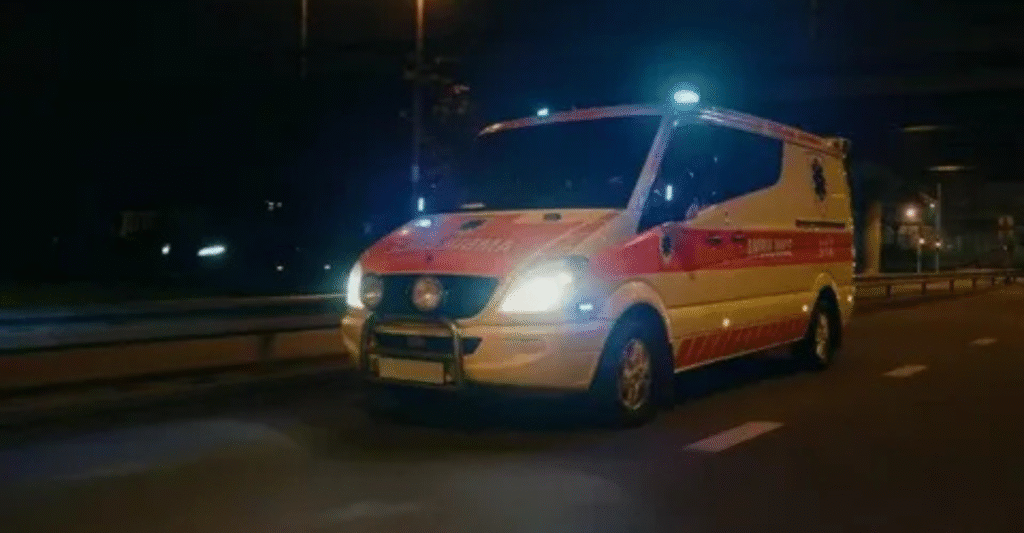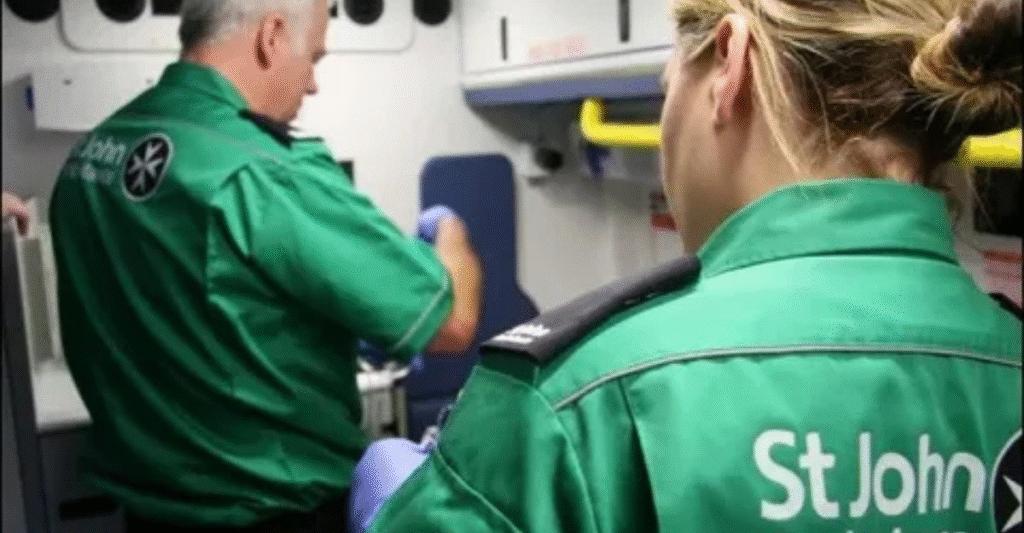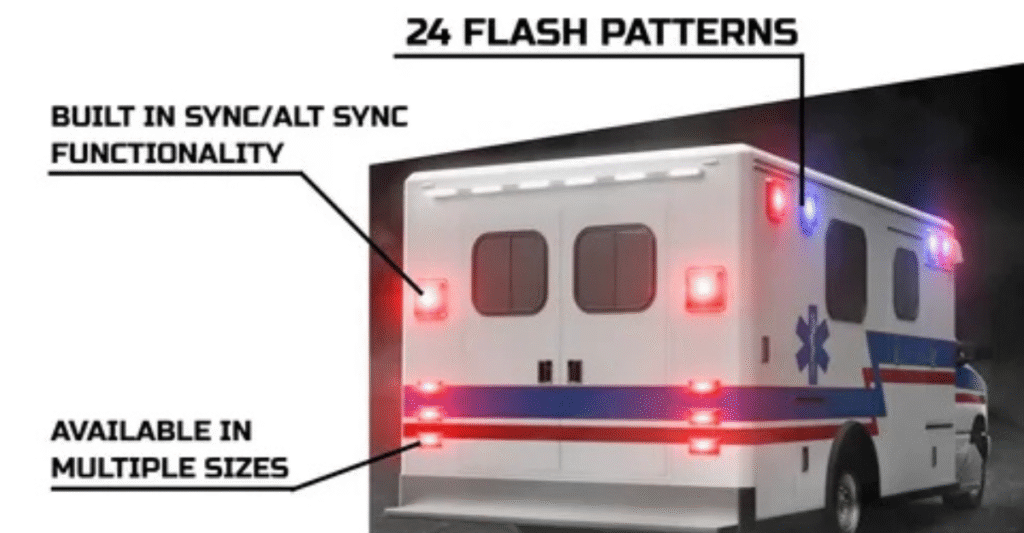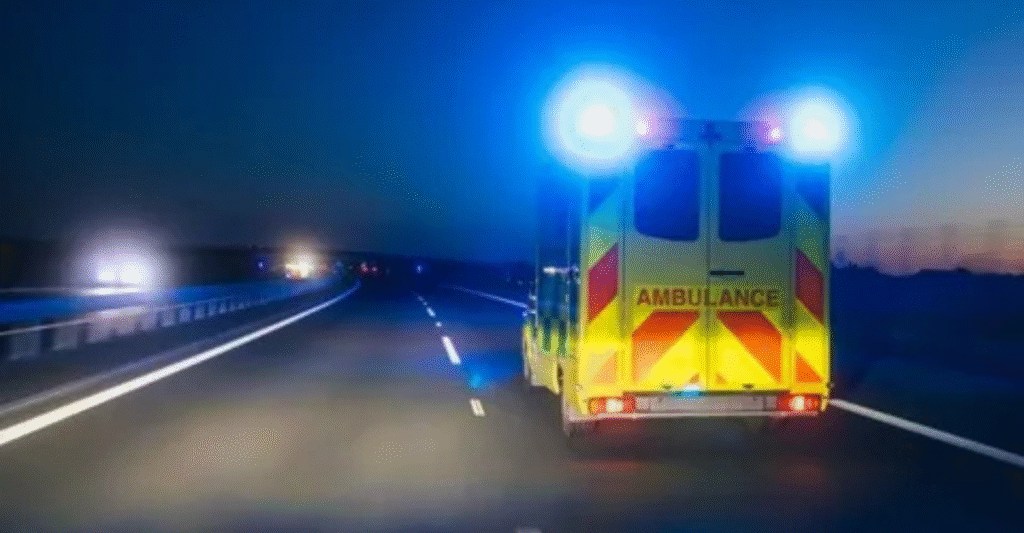Do Ambulance Lights Stop Blinding When a Person Dies? This is a question everybody asks when they see an ambulance moving down their street with its lights flashing. The lights remind us of urgency, life, and emergency situations. Most people are curious to know if the lights extinguish when the patient dies within the ambulance.
The reality is more intricate than people can imagine.do ambulance lights turn off when someone dies?Ambulance lights are not indicators of life or death. They are instruments of safety, traffic management, and speeding. To clarify this better, you should learn how emergency lights operate, what paramedics do during tough situations, and the reasons why there are lots of myths about this topic.
Purpose of Ambulance Lights

Ambulance lights are designed for one main purpose. They alert other drivers on the road and make sure the ambulance can pass quickly through traffic. These lights are not about giving the public a message about the patient’s condition. Instead, they are about safety.
Different colors mean different things depending on the country. Red and blue are most common. White lights help improve visibility at night. Amber lights are often used when the ambulance is parked or moving slowly. Together, these colors make sure drivers notice the ambulance and give way. Without these lights, saving lives would be much harder.
Do Ambulance Lights Turn Off When Someone Dies?

The short answer is no. There is no rule that lights must turn off when someone dies inside an ambulance. In fact, what happens depends on many factors such as local rules, the situation of the call, and whether resuscitation is still being attempted.
Sometimes, paramedics keep the lights on even if the patient has passed away. They may still need to reach a hospital quickly. Other times, once it is clear there is no emergency need, the lights are turned off.
READ MORE:https://doctorambulance.com/does-insurance-cover-ambulance-a-complete-guide-to-ambulance-coverag/
Reasons Ambulance Lights Might Be Turned Off

There are several reasons ambulance lights may stop flashing during a call. One main reason is that the patient is no longer in need of emergency care. If doctors or paramedics cannot save the patient, there is no need to drive at high speed with lights on.
Another reason is safety. Driving with sirens and lights can be risky. If there is no critical need, paramedics may choose to switch off the lights. Some areas even have rules that say paramedics must change to non-emergency transport if the patient is already.
Common Myths and Misunderstandings

Many people believe that lights always turn off when someone dies. This is a popular idea from movies and TV dramas. In reality, there is no such fixed rule. What the public sees often does not reflect the truth of EMS protocols.
Another myth is that turning off the lights signals death to bystanders. Paramedics are not allowed to reveal private medical details that way. Lights are never used as a public announcement system.
How Paramedics Handle a Death in Transit

Paramedics face very hard decisions when a patient dies inside an ambulance. First, they must attempt resuscitation if there is still a chance. If the patient does not respond, they may need to declare death, depending on local laws.
After that, paramedics must handle both medical and legal steps. They document the time of death, notify medical control, and prepare necessary reports. If the patient is declared dead, the ambulance often slows down and continues without emergency lights.
Regional Differences in Protocols

Not every country or state follows the same rules about ambulance lights and death. In some areas, paramedics can officially declare death. In others, only a physician can do that. This difference changes whether the ambulance continues in emergency mode or not.
For example, in the United States, paramedics in some states may stop resuscitation efforts and switch to non-emergency driving. In the United Kingdom, paramedics often continue to the hospital, but they may not use lights if the patient is already confirmed deceased.
Regional Protocols for Ambulance Lights
| Region | Can Paramedics Declare Death? | Lights On After Death? | Common Practice |
| United States | Varies by state | Sometimes | Case-by-case |
| United Kingdom | Yes | Rarely | Usually off |
| Canada | Yes in most provinces | Sometimes | Depends on policy |
| Australia | Yes | Often off | Non-emergency driving |
| Europe (varies) | Often doctor only | Rarely | Transport without lights |
Public Perception vs. Reality

Public perception is shaped mostly by TV and films. In dramas, the moment lights turn off often signals the patient has died. This makes sense for storytelling, but not in real life.
In reality, paramedics do not use lights to tell people someone has died. Lights are used only for traffic control and speed. The emotional meaning attached to them by the public is a misunderstanding. This gap between what people think and what actually happens creates myths and confusion.
Case Studies of Ambulance Light Usage

Case studies help explain how things work in practice. In one case in New York, an ambulance kept its lights flashing even after a patient passed away. The team needed to reach the hospital to complete official procedures. In another case in London, the ambulance switched off its lights once the patient was declared deceased, since there was no longer an urgent reason to drive fast.
These examples show why people get confused. Two ambulances may act differently because of different rules, training, or local laws. Both actions are correct in their own setting.
Case Examples of Ambulance Light Protocols
Location | Situation | Lights Used | Reasoning |
| New York | Patient died during transport | On | Hospital transfer required |
| London | Death confirmed by paramedics | Off | No emergency transport needed |
| Toronto | Resuscitation stopped on route | Off | Safety reasons and non-emergency driving |
| Sydney | Patient died after attempts | On | Needed to deliver body to nearest hospital |
Practical Facts About Ambulance Lights

There are a few important facts that clear up confusion about ambulance lights. First, flashing lights are never used to signal the medical outcome of a patient. Second, each decision about lights is tied to traffic safety and urgency, not symbolism.
Finally, lights may be turned on or off multiple times during a single call. For example, lights may be used to reach a scene quickly, then turned off after the patient is declared deceased. These details help explain why the same situation may look very different depending on where and when it happens.
Facts vs. Myths About Ambulance Lights
| Statement | Fact or Myth | Explanation |
| Lights always turn off if someone dies | Myth | No universal rule exists |
| Lights are used to signal death | Myth | Lights are for traffic safety only |
| Lights show emergency driving mode | Fact | They are used when urgency is present |
| Lights vary based on regional laws | Fact | Protocols differ around the world |
Impact of Ambulance Lights on Families and Bystanders

When an ambulance passes with its lights on, it sends a powerful emotional signal to anyone nearby. Families waiting at home or on the roadside often assume the lights mean hope. On the other hand, when the lights switch off, people sometimes think it means death. This belief adds stress to already painful moments.
For families, misunderstanding ambulance lights can cause confusion and fear. They may misread the signals, believing the worst even when paramedics are still giving care. This is why public education is so important.
CHEAK:https://doctorambulance.com/how-much-is-an-ambulance-ride-with-insurance/
Media Influence on Ambulance Light Myths

Television and movies have shaped the way people think about ambulances. In many medical dramas, the moment lights switch off is shown as the moment of death. It creates a dramatic effect on screen, but it misleads viewers. This repeated image has become a cultural myth that is hard to break.
In real life, emergency services do not use lights as a storytelling device. They follow strict guidelines, not dramatic timing. Yet because people watch these scenes so often, they expect reality to match fiction. This is why so many still ask the question, do ambulance lights turn off when someone dies?
Why Education About EMS Protocols Matters

Understanding the truth about ambulance lights is not just a matter of curiosity. It helps build trust between the public and emergency medical services. When people know that lights are for road safety, not for signaling death, they stop making false assumptions.
Education also helps reduce harmful rumors. For example, bystanders sometimes spread stories that someone has died simply because the lights turned off. In reality, the change may have been for traffic safety. By teaching the community how EMS protocols work, we can replace myths with facts and support paramedics in their important work.
Conclusion
So, dohttps://commissionerkarachi.gos.pk/emergency-services ambulance lights turn off when someone dies? The answer is not as simple as yes or no. Lights are not about announcing life or death. They are about moving through traffic and protecting safety.
Sometimes they stay on, sometimes they are switched off, depending on the situation. The myths we see in movies or TV make people think lights show death, but reality is different. Every call is unique, and paramedics follow rules designed to keep both the patient and the public safe.
FAQ”s
Why do ambulances sometimes drive with lights off even during emergencies?
This may happen when the patient is stable or when traffic conditions don’t require flashing lights.
Can paramedics declare death inside an ambulance?
Yes, in many regions they can. In some places, only doctors can declare death officially.
Do ambulance sirens always go with lights?
Not always. Sometimes lights are used without sirens, depending on traffic or noise restrictions.
Why do people think lights turn off when someone dies?
Movies and TV often show lights turning off as a symbol of death. This is not how EMS works in reality.
What do different ambulance light colors mean?
Red and blue are most common for emergencies. White improves visibility, while amber is used for caution when parked.